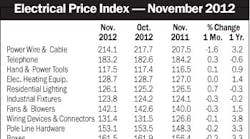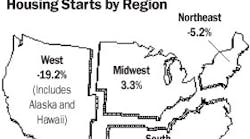Latest from Mag
Turning a century-old electrical products manufacturer into something that looks more like a software and services company, without spoiling the value of its hard-won product position, is no small undertaking. But that’s the direction Schneider Electric intends to grow.
At a meeting of editors last week at the United Center in Chicago, near Schneider Electric’s U.S. headquarters in Palatine, Ill., the company sketched out plans for a radical rethinking of its role in the electrical market, based on systems for integrating data gathering and analysis from the device level up through the executive suite, under the brand StruxureWare.
“We’re making a big bet on software,” said Jeff Drees, Schneider’s U.S. country president. Schneider doesn’t see itself ever becoming a true IT company, he said, but by leveraging its established position in device-level sensing and data acquisition, combined with software capabilities keyed to its StruxureWare software suite and bolstered by its acquisition last year of infrastructure software provider Telvent, the company’s leaders see an opportunity to provide intelligence and analytical support for clients’ pursuit of energy management and sustainability.
Schneider may be moving beyond selling circuit breakers through distributors, but the company has no intention of letting its position in those product markets falter. Today, 80% of the company’s revenues come from product sales through the channel, but product sales tend to be closely tied to GDP, said Drees, while he expects professional services to grow at twice that rate. “We see profits from the sale of products to fund our evolution to a solutions company,” he said.
“We still care about the big gray boxes,” said Allen Breeze, senior vice president, Power Business. “We’ll continue to invest in that, and we see our distributor partners as key players.”
Schneider’s move to focus on software and services will mean changes in the products those distributors sell, primarily in terms of more intelligence built into the devices to provide the data to drive intelligent energy management systems. Schneider last week announced plans for a significant strategic investment over the next four years in products to expand the company’s portfolio of power distribution solutions to deliver “new levels of innovation, intelligence, safety and reliability.”
Breeze does expect to see a shift in the way distributor authorizations are awarded, moving to something based on the distributor’s capabilities and the role the distributor wants to play in demand creation. He pointed to the fact that many of Schneider’s distributors have developed expertise in providing energy audits and some have pushed further into energy management and engineering services as examples of how distributors’ roles are changing. He said Schneider intends to support those changes with incentives for investments in areas such as services and training.
The larger picture drawn by Schneider executives puts the company in the role of merging and integrating data streams that historically developed in discrete silos, and creating a smooth flow of consistent information that can be analyzed and acted up on at the control level, the operations level and the executive level, giving everyone in the enterprise the same “one version of the truth,” said Martin Hanna, vice president of press relations.
The company is developing tailored StruxureWare suites for specific vertical markets — initial introductions include a suite for data centers, released last week, with water and wastewater systems, healthcare and the electrical grid soon to follow. Drees said suites for other key markets including commercial and industrial buildings, government facilities and process industries will roll out over time.
The shift is part of a strategy being driven from Schneider’s Paris global headquarters by the company’s chief executive, Jean-Pascal Tricoire, in which no part of the company will develop systems unless they can interact seamlessly with all the others. This spawned a coding frenzy among developers associated with the company’s myriad software products to reconfigure the systems for interaction, based mostly on open standards. They’re being revised not only work together but have a cohesive look and feel, incorporating things like cloud-based offerings and smart-phone access.
The core of the plan is energy management, but Schneider has already found applications somewhat beyond energy where its systems can be applied, such as helping cities manage traffic flow. The company’s work on the “smart cities” concept keys on performance contracting. In partnerships such as a recent one with the City of Denison, Texas, Schneider is finding ways help cities leverage savings — such as reduced emergency calls to clean up traffic accidents — to invest in new data infrastructure and systems without tapping capital budgets that have been stripped to the bone in the course of the recession.
To accelerate its learning curve and capture the benefits of energy management for its own operations and balance sheet, Schneider Electric has been eating its own dogfood — employing its best energy-efficiency technologies at its 160 production facilities around the world in a program called Schneider Energy Action. The company said it has invested several million euros annually to equip its plants with variable speed drives, meters, sensors, controllers and other building management systems, and since 2005 has cut its own energy consumption by 15%. Now the company plans to cut another 10% out of its energy costs by 2014, in part by deploying its StruxureWare Energy Operation and Resource Manager systems companywide.

